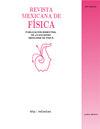Investigation using Monte-Carlo codes simulations for the impact of temperatures and high pressures on thin films quality
IF 1.2
4区 物理与天体物理
Q3 PHYSICS, MULTIDISCIPLINARY
引用次数: 1
Abstract
The quality of thin films represents the key to any improvement made in the device components manufacturing, and the way to obtain this quality based on deposition parameters takes the attention of our group. In this work, using the sputtering technique in the context of the Monte-Carlo approximation, an investigation of the effect of temperature and elevated pressure on the number of ejected particles and hence their deposition and the creation of finest thin films are applied. A vacuum chamber with 30x30x50 cm in dimension holding a magnetron which has a 2 cm in radius circular target was created. Inside this chamber, 105 particles of Argon (Ar) followed by the same number of xenon (Xe) gas are injected. This target moves away by 15cm from the substrate (with 7 cm in radius), containing three materials (Silicon (Si), germanium (Ge), and copper (Cu)) widely used in advanced technologies as in electronics and photovoltaic cells panels. Evident and satisfactory results were obtained, demonstrating that increasing pressure (0.5, 2, and 5 Pa) for both gases drops off in a spectacular way the total number (with different values) of the material particles reaching the substrate and disrupting the morphology of the thin films. moreover, and contrary to pressure, it has also been proved that mounting gas temperatures of 100, 300, and 600 K, representing three different states in kelvin degrees, where 100 K-173°C for the low (cold), 300 K27°C for the regular (atmospheric) and 600 K327°C for the high (warm) instances, supply a large number of materials atoms in substrate-level which conduct to the finest quality of the thin films. In addition, germanium gives the best results compared to silicon and copper.利用蒙特卡罗代码模拟研究温度和高压对薄膜质量的影响
薄膜的质量是器件组件制造中任何改进的关键,基于沉积参数获得这种质量的方法引起了我们小组的注意。在这项工作中,在蒙特卡罗近似的背景下使用溅射技术,研究了温度和升高的压力对喷射颗粒数量的影响,从而研究了它们的沉积和最精细薄膜的产生。创建了一个尺寸为30x30x50cm的真空室,该真空室容纳一个半径为2cm的圆形靶的磁控管。在该室内,注入105个氩(Ar)颗粒,然后注入相同数量的氙(Xe)气体。该目标距离衬底15厘米(半径7厘米),包含三种材料(硅(Si)、锗(Ge)和铜(Cu)),广泛用于电子和光伏电池板等先进技术。获得了明显且令人满意的结果,表明两种气体的压力(0.5、2和5Pa)的增加以惊人的方式下降,到达基底的材料颗粒的总数(具有不同的值)并破坏了薄膜的形态。此外,与压力相反,还证明了安装气体温度为100、300和600K,代表三种不同的开氏度状态,其中100K-173°C(低温),300 K常规(大气)温度为27°C,温度为600 K327°C,对于高(温)情况,在衬底水平上提供大量材料原子,这些材料原子可以传导到最优质的薄膜。此外,与硅和铜相比,锗的效果最好。
本文章由计算机程序翻译,如有差异,请以英文原文为准。
求助全文
约1分钟内获得全文
求助全文
来源期刊

Revista Mexicana De Fisica
物理-物理:综合
CiteScore
2.20
自引率
11.80%
发文量
87
审稿时长
4-8 weeks
期刊介绍:
Durante los últimos años, los responsables de la Revista Mexicana de Física, la Revista Mexicana de Física E y la Revista Mexicana de Física S, hemos realizado esfuerzos para fortalecer la presencia de estas publicaciones en nuestra página Web ( http://rmf.smf.mx).
 求助内容:
求助内容: 应助结果提醒方式:
应助结果提醒方式:


